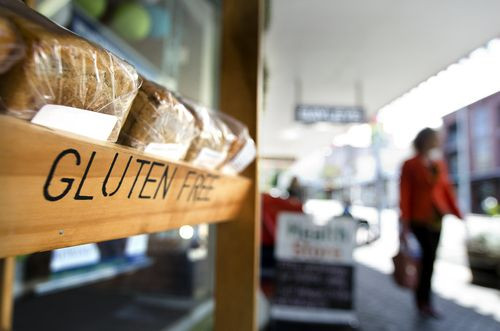'Gluten-Free' Labeling Laws Now Enforced By FDA; Celiac Disease Sufferers Can Finally Trust Labels

Gluten-free labels will finally become a reliable term now that the Food and Drug Administration (FDA) is enforcing packing regulations. Before Tuesday, companies could throw “gluten-free” on the labels of any food product they wanted to, but now it has to contain less than 20 parts per million of gluten in order to keep the label, or else they “will be subject to regulatory action.”
Almost a year ago today, on Aug. 2, 2013, the FDA issued a final ruling that clearly defined “gluten-free” for food labels in order to help those with celiac disease and gluten intolerances from becoming sick. According to the FDA, an estimated three million people in the United States suffer from celiac disease, which is the body’s abnormal reaction to gluten that triggers a production of antibodies to attack and damage the lining of the small intestine. People with celiac disease can’t absorb the necessary nutrients, which puts them at risk of nutritional deficiencies, osteoporosis, infertility, miscarriages, and intestinal cancers, among other health problems.
"If consumers can't have confidence in the products long-term, it's going to hurt the overall trend," Steve Hughes, CEO of Boulder Brands, which owns leading gluten-free food companies Glutino and Udi's told The Associated Press.
The FDA will stand as a marker for what can include the label. Companies whose products aren’t gluten-free by FDA regulation chose to label themselves that way in order to target markets of people who believe gluten-free diets are the key to increased energy levels, thinner thighs, and decreased belly bloating, all of which are trending physical traits.
Gluten-free foods have been a rapidly growing market in the last 20 years. In 2010, they had sales reach an estimated $2.6 billion, and by the end of 2016 they’re expected to total $15 billion in annual sales, according to market research company Mintel.
“I see this as part of the current American concern with digestive health, which is also responsible for the yogurt boom,” Harry Balzer, vice president at the market research company NPD Group, told The New York Times. “About 30 percent of the public says it would like to cut back on the amount of gluten it’s eating, and if you find 30 percent of the public doing anything, you’ll find a lot of marketers right there, too.”
What is gluten?
It’s the protein compound found in wheat, rye, barley, and triticale (a newer grain with similar qualities to wheat found in certain breads, pastas, and cereals). This means many breads, baked goods, soups, pastas, cereals, sauces, salad dressings, malts, food coloring, and beer contain gluten and should be avoided unless they were specially developed without gluten, according to the Celiac Disease Foundation.
The new regulations are "raising awareness that there is a disease associated with the gluten-free diet," Alice Bast from the National Foundation for Celiac Awareness told The Associated Press.



























